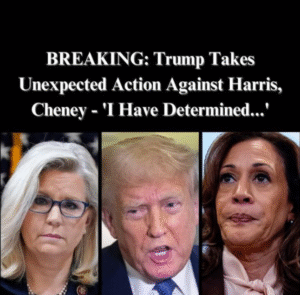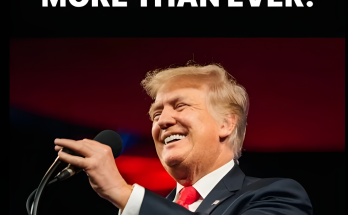Trump’s Unprecedented Revocation of Security Clearances: A Deep Dive into the Decision
In a move that stirred fierce debate across the political spectrum, former President Donald Trump’s decision to revoke the security clearances of several high-ranking former intelligence officials marked a turning point in the relationship between the presidency and the intelligence community. At the center of this decision was a broader conversation about loyalty, dissent, and the boundaries of presidential power.
The revocations began with former CIA Director John Brennan, whose outspoken criticism of Trump’s policies and conduct prompted the administration to take swift action. Trump, through a statement issued by the White House, cited Brennan’s “erratic behavior” and “increasingly frenzied commentary” as justification. However, critics argued that the move was politically motivated—an act of retribution against someone who had publicly questioned the president’s fitness for office.
What made the decision unprecedented was not just the revocation itself, but the rationale behind it. Traditionally, security clearances remain intact for former officials as a courtesy and a practical measure—allowing them to consult on national security matters when necessary. Stripping these clearances had rarely, if ever, been used as a political tool. Trump’s move set a new tone, suggesting that clearances could be wielded as leverage or punishment, depending on a former official’s public alignment.
Following Brennan, Trump hinted that more revocations might follow, including those of James Clapper, James Comey, Michael Hayden, and others. These individuals, all of whom had voiced concerns about the administration, were suddenly under threat of being further distanced from intelligence resources. While Comey’s clearance had already lapsed, the public naming of individuals sent a strong message.
Supporters of Trump claimed he was within his rights as president to decide who has access to classified information. They emphasized that security clearances are not entitlements but responsibilities tied to trust. If that trust is broken, they argued, the privilege should be revoked. However, others warned that the decision could have a chilling effect on free speech, discouraging former officials from speaking out for fear of professional reprisal.
Legal experts were divided. Some pointed to the president’s broad authority in national security matters, while others warned that using that authority to silence dissent might violate constitutional protections. The lack of a clear, apolitical process for revocation added to the concern.
Ultimately, the move highlighted deeper fractures within the U.S. political landscape—an erosion of norms that had previously governed the balance between security, transparency, and politics. Trump’s decision was both a symbol and a spark, igniting debates that extended far beyond the intelligence community.
Whether viewed as a justified assertion of presidential authority or an abuse of power, the revocation of security clearances under Trump’s administration remains a pivotal moment. It challenged the unwritten rules of governance and raised urgent questions about how the U.S. manages national security in an era defined by partisanship and polarization.
